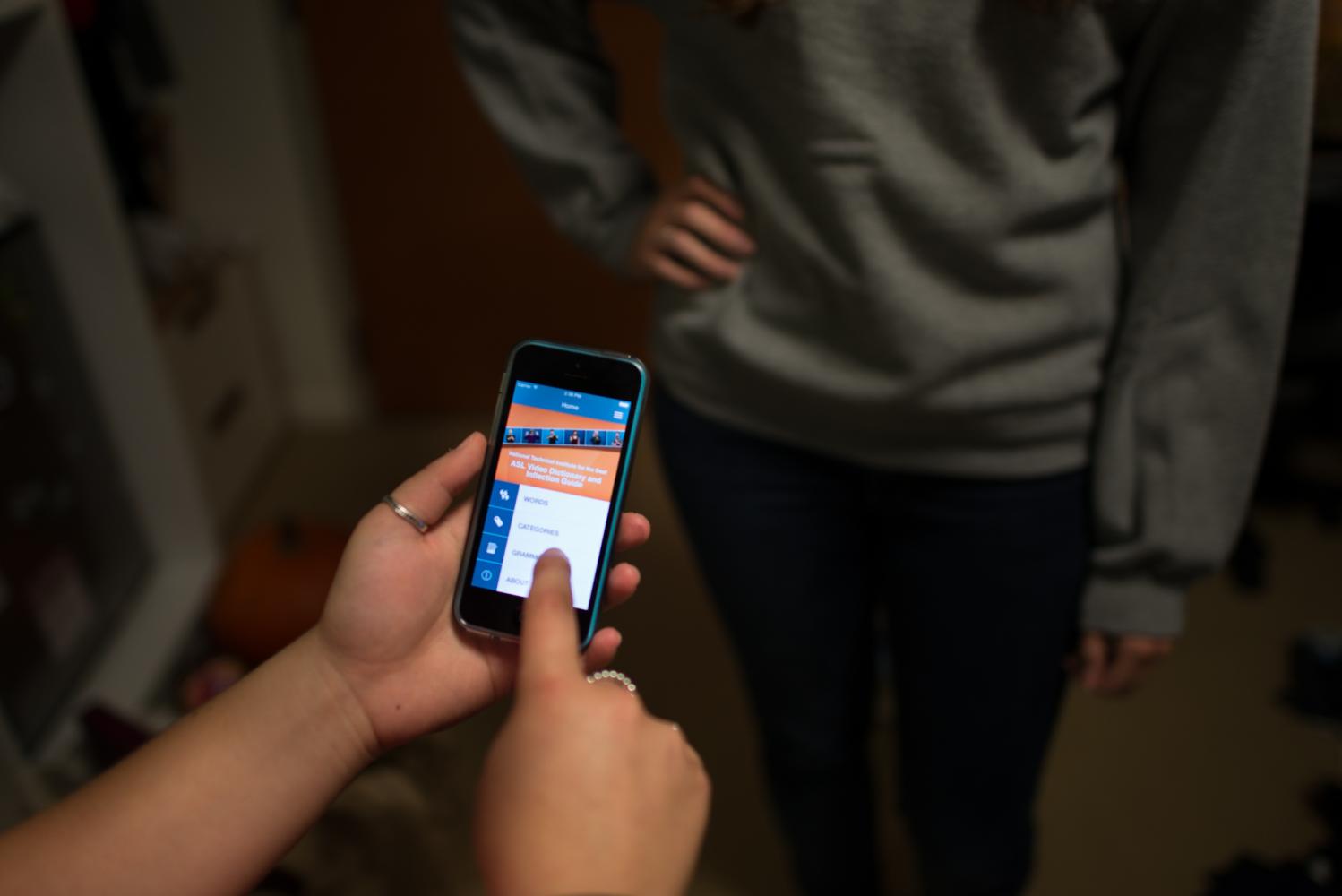Providing a Means for Communication: Connecting the Deaf and Hearing Worlds
by Bill Gerken | published Oct. 15th, 2014
When learning another language, you’re bound to have that moment when you can’t remember a word; it’s on the tip of your tongue, and you know that it will bother you throughout the entire day if you can’t figure it out. The feeling is starting to consume you, starting to build up and create anticipation. The more you think about it, the harder it is to remember.
What if there was a solution to this problem? Google Translate provides the answer for most languages; if you type the word in your language and select another language to translate that word to, voila, you have your answer. American Sign Language provides a challenge on an entirely different spectrum. American Sign Language is based entirely on vision, not text. You must be able to see the sign in order to communicate effectively. To overcome this barrier, RIT Production Services began working on a project in spring of 2014 that would provide the Deaf and hearing community with a mobile-accessible ASL Video Dictionary.
Raman Bhalla, the project manager for this venture, stated, “The focus [of this project] was on ease of use while making the apps aesthetically pleasing.” Web Designer Megan Bastian and fourth year New Media Design student Kat Pillman focused on bringing this project to life as a web and mobile app that would meet both the client's and Project Director Geoff Poor's expectations. "We based the look and feel on the previous version of the web app – reusing some of the visual elements – but tried to make this version cleaner looking, more modern and easier to navigate," said Bastian. Reactions to the app and mobile website by deaf and hearing students alike have been permeated with positive feedback.
Tianna Mañón, a fourth year Journalism major and hearing student with limited signing skills, appeared to be impressed by the usability of the app. According to Mañón, “I think it’s a great idea! It allows you to learn on the fly!” Without a doubt, accessibility is one of the main goals Production Services had in mind when creating this app. Mañón also works at the Gene Polisseni Center, and she expressed that this new app will help “bridge the gap between deaf and hearing people,” allow her to communicate with deaf students easier than if she were using pen and paper and help her learn sign along the way. The NTID ASL Video Dictionary will make it easier for students and others to learn sign rather than trying to discern the motions that make up a sign in a textbook drawing.
Another Journalism student, Jessica Sinclair, is part of the Deaf community at RIT and expressed her thoughts on the new app. Sinclair felt the app was easy to navigate, although she doubted she would use it, as she is nearly fluent in ASL. Though she would not need the app, Sinclair said, “I would absolutely recommend it to hearing people learning ASL. It’s nice that the app has slow and different levels of speed, because otherwise hearing people might not catch it [the sign].” Sinclair’s only complaint was that she disliked the pixelated quality of some of the videos. Due to the small team working on the project, "It made more sense to repurpose old videos," according to Bhalla. Web Administrator Harry Groover expressed that he would like to have seen newer, higher-quality videos, but explained that because they "couldn't find the original recordings of the videos...it simply wasn't possible."
For students interested in this new service, the mobile website can be found for free here, and the app is now available for Android and Apple download for $1.99. According to Bhalla, “The $1.99 you might spend on the iPhone or Android app will be well worth your money.”



